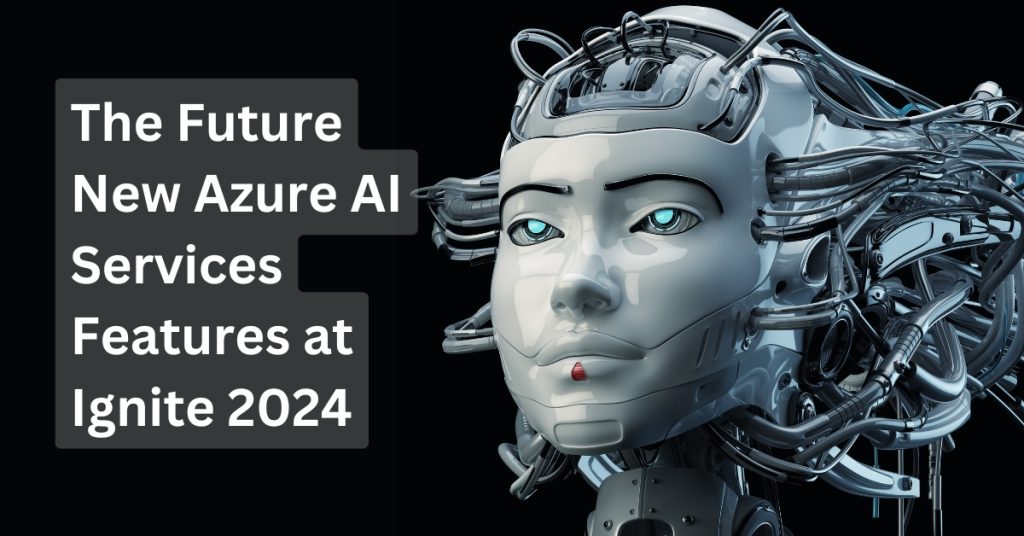
Recently, Microsoft unveiled exciting new features in Azure AI Services at the Ignite 2024 event. As a Microsoft partner, we are closely monitoring these updates to understand how they can unlock more value for enterprises.
The updates focus on empowering businesses with enterprise-grade generative AI applications. From leveraging advanced foundation models to enhancing user experiences, these innovations are set to revolutionize AI in the enterprise space.
Developing generative AI applications tailored to your enterprise data is a complex task, requiring powerful GPUs to fine-tune large language models (LLMs). To simplify this process, Microsoft introduced Model as a Service (MaaS) in the Azure AI model catalog. With MaaS, you can fine-tune LLMs and build generative AI applications using inference APIs. This pay-as-you-go model charges based on the number of tokens used, eliminating the need for costly GPU infrastructure.
New AI Capabilities in Azure AI Services
While MaaS provides access to large language models, building generative AI applications can still be daunting. To address this, Microsoft launched Azure AI Studio, a state-of-the-art platform that leverages cutting-edge models and services like OpenAI’s GPT-4. This platform enables the creation of custom copilots and generative AI solutions.
Generative AI applications can create realistic content and explore enterprise data. To enhance search experiences within these applications, Microsoft introduced Vector Search and Semantic Ranker in Azure AI Search. Vector Search allows for rapid searching across large datasets, while Semantic Ranker improves the relevance and quality of search results. For longer conversations with your AI applications, you can utilize GPT-3.5 Turbo, supporting a 16K token prompt length. Microsoft also announced the public preview of GPT-4 Turbo, offering greater control and efficiency at a lower cost.
Typically, generative AI applications handle text inputs and outputs. However, with the launch of GPT-4 Turbo with Vision, these applications can now understand and generate responses based on visual content. This model recognizes objects in images and generates text responses, enabling tasks like reading handwritten shopping lists and adding items to digital carts. Expanding this capability to video, GPT-4 Turbo with Vision, in conjunction with Azure AI Vision, can understand video content and generate text outputs.
These features solidify Azure as one of the leading platforms for leveraging generative AI technology in business.
14 Questions to Ask Before Embracing Azure AI Capabilities
Now is the ideal time to embrace or accelerate your Azure cloud strategies. Consider revamping your existing strategies to take advantage of the latest AI capabilities. Here are key aspects to consider before making this significant leap:
Strategic Alignment
- How can Azure Machine Learning enhancements align with our strategic goals for the coming year?
- Which business areas or processes could benefit most from these AI advancements?
Operational Impact 3. How might prompt flow and the model catalog streamline our AI application development lifecycle? 4. What operational changes can we foresee by integrating Model-as-a-Service?
Data Integration and Utilization 5. How can we leverage OneLake integration to enhance collaboration between data engineers and machine learning professionals? 6. What opportunities exist to maximize OneLake data assets for model training and predictions?
Decision-making and Model Selection 7. How can the model catalog’s benchmarking capabilities aid in selecting foundation models for our use cases? 8. Which models within the catalog align best with our business requirements?
Responsible AI Implementation 9. What steps can we take to ensure the responsible use of AI solutions, considering the latest updates? 10. How can we monitor and maintain the safety and quality of AI applications in production?
Adoption and Integration 11. What strategies should be implemented to encourage the adoption of Azure AI Studio across departments? 12. How can we maximize Azure AI Studio's tools and models to drive innovation?
Scaling AI Initiatives 13. How can we scale proof-of-concepts developed in Azure AI Studio into full production? 14. How can we ensure scalability while maintaining the quality of AI solutions across the organization?
Answering these questions will help you leverage the latest AI capabilities in Azure AI Services and create a concrete roadmap.
Need Help?
We’re here to assist. As a trusted Microsoft partner for over 16 years, DumpsBoss helps enterprises of all sizes realize successful cloud adoption strategies.
Comments (0)